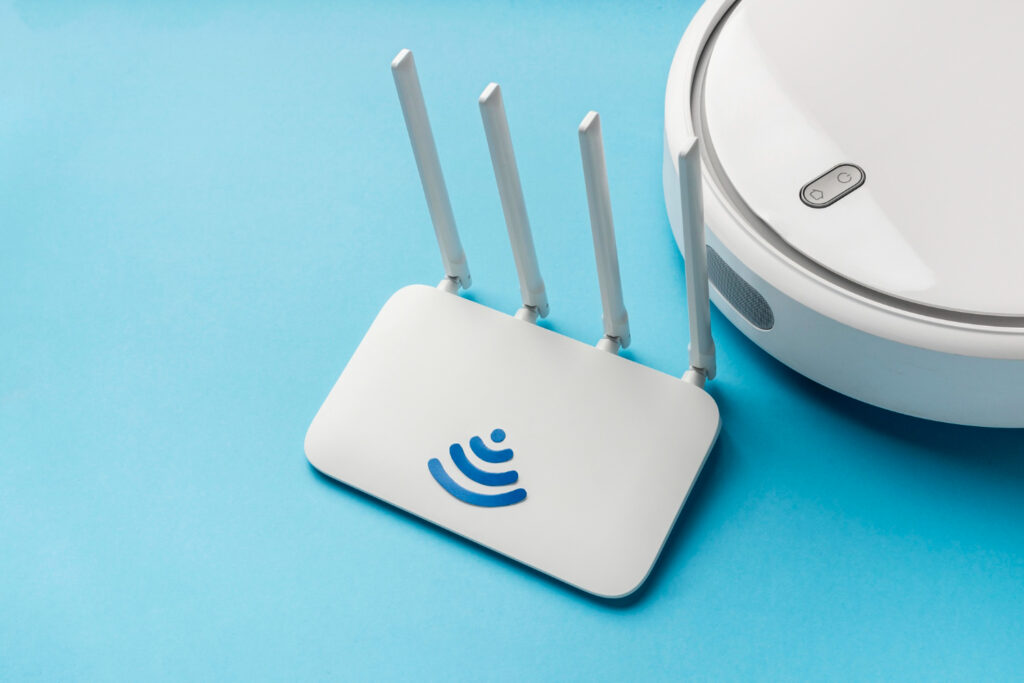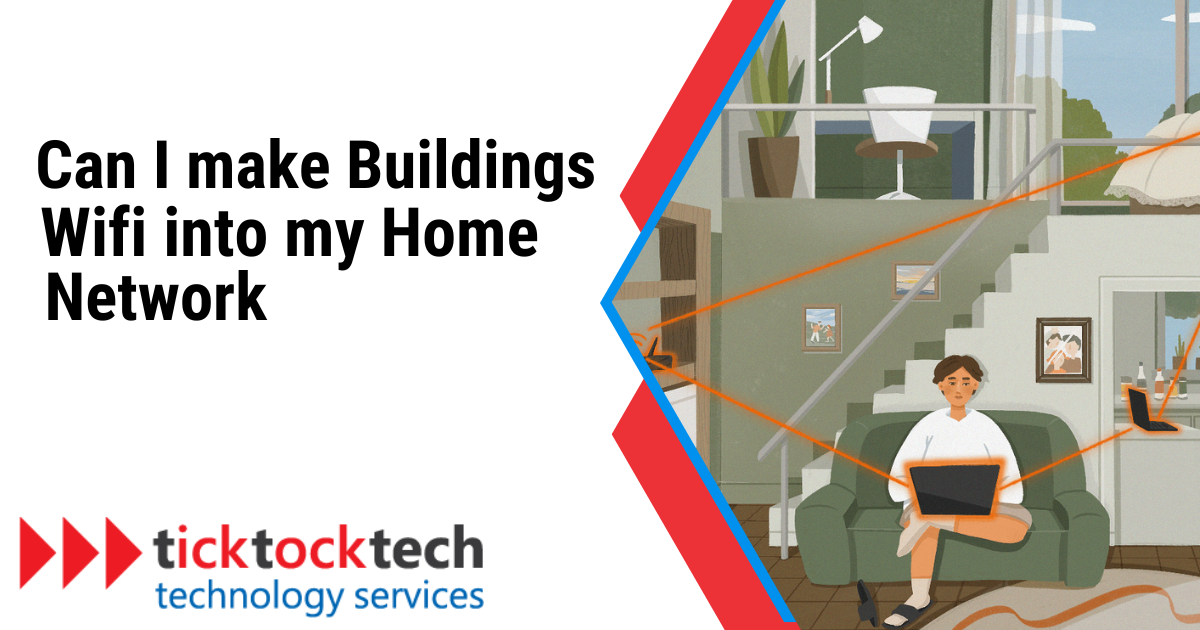Home networks will be an important part of both individual and small business life in 2023. This comprises both wireless and wired connections to access the internet and work at a reliably fast rate. In times like this, especially for individuals who work from home (teleworking) and game streamers need a strong network connection to get their work done. Can I build Wi-Fi into my home network?
For businesses alike, network is an important part of their success, and even further, network security is more important. In such cases, proper network coverage is needed. WiFi comes in many sizes and many modes. Though it is wireless, the receiving mode is from the satellite. Could be cables connected and passed into a building to connect with the server. This applies to home networks also. Can you make a building WiFi into the home network? let’s see how you can get this done.
What is Building Wifi?
Building Wi-Fi is the term used to describe the use of wireless local area network (Wi-Fi) technology inside of a particular building, such as an office complex, residential building, or commercial establishment. With the use of this configuration, building inhabitants and visitors can access wireless internet from anywhere in the structure, providing connectivity for a variety of gadgets like laptops, cellphones, and tablets.
Wi-Fi networks for buildings typically consist of access points (APs) that are positioned strategically across the property to ensure uniform coverage. These APs emit Wi-Fi signals to allow internet access while being linked to a network. Building Wi-Fi’s major goal is to provide seamless connectivity, meeting users’ internet needs while also promoting mobility and flexibility. It is frequently observed in commercial settings, academic institutions, medical facilities, and apartment buildings.
How does Building Wi-Fi work?
building Wi-Fi is a wireless local area network (Wi-Fi) architecture that offers internet connectivity inside of a particular building. Its operation can be divided into many essential parts:
Access Points
The foundation of creating Wi-Fi networks is access points. These gadgets act as Wi-Fi transmitters, sending out signals that allow for wireless communication. They are positioned thoughtfully to provide complete coverage across the whole structure. APs frequently have wired network infrastructure connections.

Radio Waves
Wi-Fi in buildings uses the radio frequency spectrum to operate. To send data to and receive data from laptops, cellphones, and tablets that support Wi-Fi, APs employ radio waves. Wi-Fi adapters are used by these devices to communicate with the APs.
Wired Network Connection
Building Wi-Fi is connected to the internet via a wired network infrastructure. The internet connection comes from a wired network that may comprise Ethernet cables and switches. This network has access points connected to it for data transmission and reception.
Authentication and SSID
A Service Set Identifier (SSID), which is essentially the network name, serves as the unique identifier for each building’s Wi-Fi network. To connect to the network, users must connect to the designated SSID. To protect data privacy and security, organizations often guard network access using authentication techniques such as passwords or encryption protocols (like WPA2 or WPA3).
Data Routing
The access points forward data traffic from the building’s Wi-Fi network to the wired network.Before accessing the internet, a firewall and different network components may then route the data.This routing procedure makes sure that information moves freely between Wi-Fi gadgets and outside servers or websites.
Service Quality (QoS)
Wi-Fi networks frequently use Quality of Service (QoS) techniques to give particular types of traffic priority. This guarantees that crucial applications, including phone and video conversations, get the bandwidth they require and have low latency, resulting in a positive user experience.
Can I Make Building Wi-Fi into My Home Network?
Yes, it is possible to integrate building Wi-Fi into your home network. Furthermore, You can adapt building Wi-Fi, typically designed for larger structures like offices or commercial facilities, for residential use. You can modify access points, cable connections, and network infrastructure used for building Wi-Fi to work in a residential area. This requires placing access points in strategic locations throughout your house, linking them to your current wired network, and setting up the network configuration.
It works well to provide thorough wireless coverage across your home, enabling seamless communication on a variety of devices. However, bear in mind that the deployment may not be on the same scale as a large-scale or commercial building network. You can still improve the performance and coverage of your home network.
How do make Building Wi-Fi into my Home Network?
You can adhere to these methods to integrate Building Wi-Fi into your home network in 6 steps:
- Purchase a home-use access point of commercial grade. To get the best coverage, strategically place it throughout your house.
- Using Ethernet wires, join the access point to your home network. Ensure that you turn on the access point and set it up correctly for smooth operation.
- Use a web browser to gain access to the access point’s management interface. Set up the security options, SSID, and any further network-specific configurations.
- Connect the access point to your home router or switch to integrate it into your home network. Ensure that your router assigns it an IP address.
- To ensure a smooth transition between networks, match the SSID and security configuration of the new access point with those of your current home network.
- Check the network to make sure that devices can seamlessly switch between your home network and the new building Wi-Fi network without experiencing any hiccups.
FAQs
The cost of building a wireless network varies based on factors like network size and complexity. For a basic home Wi-Fi network, you might spend between $100 and $300, while larger or commercial networks can cost thousands, including installation and maintenance fees.
To extend your home Wi-Fi range, you can use Wi-Fi range extenders, opt for mesh Wi-Fi systems, strategically position your router, consider external antennas, or use powerline adapters for extended coverage.
Yes, you can build your own Wi-Fi network. For a basic home network, you’ll need a router and may add access points. More complex networks or commercial setups may require professional assistance.
The best way to boost your Wi-Fi signals, consider upgrading your router to a modern model supporting the latest standards, optimizing router placement, using a mesh Wi-Fi system, keeping firmware updated, implementing Quality of Service (QoS), reducing interference, and utilizing Wi-Fi extenders for improved coverage.
Conclusions
In conclusion, the significance of robust home networks cannot be underestimated. Vital for both individuals and small businesses, these networks ensure fast and reliable internet access, crucial for teleworking and seamless streaming. Adapting Wi-Fi, originally designed for larger structures, can extend its benefits to home networks, building its suitability for residential use.
Access points, wired connections, and network configurations, when carefully integrated, provide consistent wireless coverage. This empowers users to enjoy efficient telecommuting, online collaboration, and uninterrupted entertainment. In a world increasingly reliant on technology, a strong and stable home network is a fundamental component of modern living.

